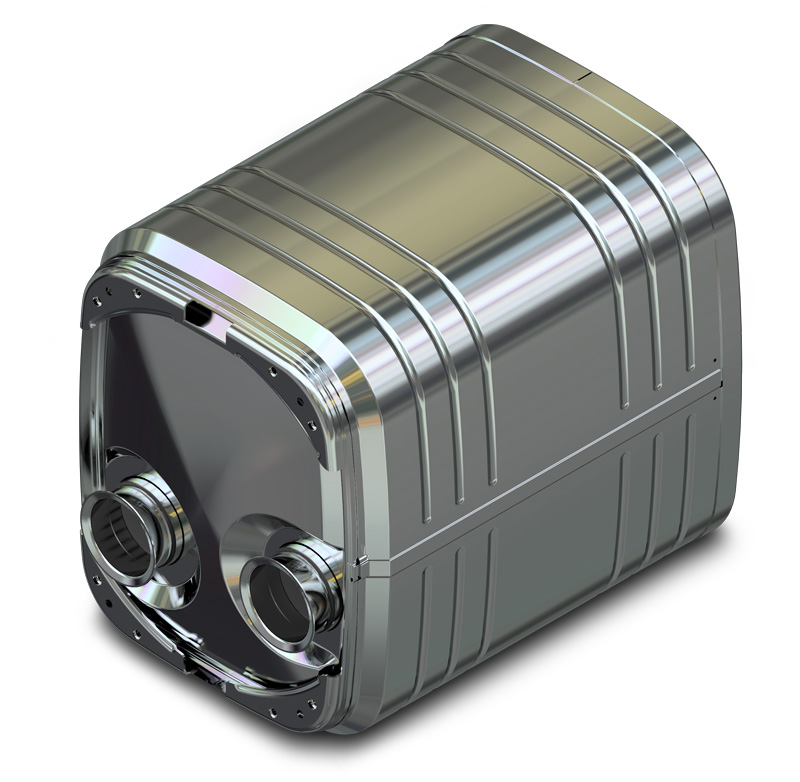Three-way catalyzers
The three-way catalyzers are able to reduce three pollutant groups of an exhaust gas from internal combustion engines. As well as the various hydrocarbons (HC) and the carbon monoxide (CO), the three-way catalyzer can also reduce nitrogen oxides. In specialist use this catalyzer is also designated as a TWC (Three-Way-Catalyst).
Technology and functioning
High-quality, three-way catalyzers include a minimum of two of the three precious metals platinum, palladium and rhodium. As well as the precious metals, a material which can buffer and release oxygen atoms again is further required. As a storage material, cerium oxide is used. Special formulations of the precious metal coating enable high-quality catalyzers to also function permanently with temperatures up to 1,000°C.
So that a reduction of the three harmful gases is possible with a three-way catalyzer, the oxygen content in the exhaust gas may only be very small. One then refers to an operation of the engine with Lambda 1. This mode of operation is realised today to a large degree only in petrol and gas engines.
The engine control adapts the combustion at very short intervals so that slight fluctuations of the oxygen content in the exhaust gas result, and on average Lambda 1 is adhered to. The oxygen content is measured with a Lambda sensor. Since the measured value of the engine control is used for the regulation, in case of at a three-way catalyzer, a controlled system or catalyzer is also referred to. With slightly rich operation (oxygen deficiency) of the engine, the nitrogen oxides are reduced especially well and, in case of slightly lean operation (oxygen surplus), the hydrocarbons and carbon monoxide are decreased especially well. The oxygen storage in the catalyzer buffers this fast change of the engine operating mode, so that all three harmful gases can be reduced in the catalyzer with high efficiency.
Area of application
The greatest use by far of three-way catalyzers is found in petrol and gas engines of cars. Engines with three-way catalyzers manage without an SCR catalyzer. A retrofit is possible, where an additional control unit and a Lambda sensor are then required.

 Go to HJS UK
Go to HJS UK

